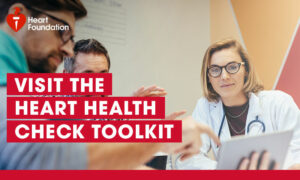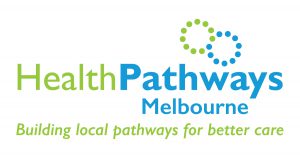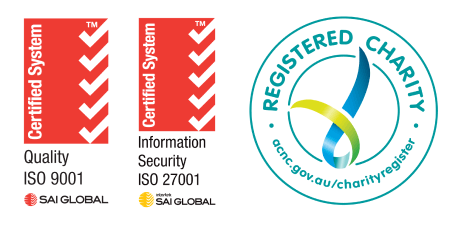
How can our PIP QI reports, the Heart Foundation’s Heart Health Toolkit and Medicare item 699 (Heart Health Check) help general practices and their patients?
About our PIP QI reports
North Western Melbourne Primary Health Network (NWMPHN) is continuing to provide regular, customised PIP QI data reports for any general practice in the region wanting to use data to drive improvement.
These reports are based on the 10 measures for the Practice Incentives Program Quality Improvement (PIP QI) Incentive. Remember: you can choose any area of data driven quality improvement for the PIP QI Incentive, as long as you are working in partnership with NWMPHN.
However, the 10 measures have been chosen as evidence-based measurements and are the ideal starting point for a QI activity.
In this article we are taking a closer look at PIP QI Measure 8: Proportion of patients with the necessary risk factors recorded to enable a cardiovascular disease assessment.
Why is this important?
The burden of cardiovascular disease (CVD) remains high. In Australia CVD:
- causes one in four of all deaths
- claims the life of one person every 13 minutes
- accounts for 1,600 hospitalisations per day.
Assessment of absolute CVD risk based on multiple risk factors is a true evidence-based approach. This is more accurate than an approach based on individual risk factors, due to the cumulative nature of these risks.
Absolute CVD risk assessment brings together multiple risk factors to provide an estimate of combined risk of heart attack or stroke in the next five years.
Creating even a moderate reduction in several risk factors is more effective in reducing overall CVD risk than a major reduction in a single risk factor alone (from the Heart Health Toolkit).
The age group for active Aboriginal and Torres Strait Islander patients is 35–74 years, whereas the age group for active non-Indigenous patients is 45–74 years.
Which risk factors are assessed?
The following factors are considered when assessing absolute CVD risk:
- tobacco smoking
- diabetes status
- systolic blood pressure
- total cholesterol and HDL cholesterol levels
- age
- sex
How can the Heart Health Check toolkit help? 
The Heart Foundation have produced the Heart Health Toolkit to assist general practices with CVD risk assessments. The toolkit includes tips for improving the recording of risk factors and recalling patients for assessments, among many other helpful resources.
Associate Professor Ralph Audehm, a GP at Carlton Family Medical and academic, told the Heart Foundation that “the Heart Health Check Toolkit will streamline your practice, help you communicate heart healthy tips to your patients and make sure the 20 min check runs as conveniently as possible.
“With a specific Heart Health Check item number, it is much easier to track heart health assessments and take a more proactive approach for our patients. The item number also allows us to leverage the use of our practice nurses to streamline the process.”
Medicare Heart Health Check 
Medicare supports a comprehensive heart health assessment with a Heart Health Check item. The Heart Health Check is the patient-friendly term for a comprehensive CVD risk assessment and ongoing management plan for people who do not have CVD.
Key points
- The Heart Health Check item number is 699 for VR GPs (and item 177 for Non-VR GPs). Patients are eligible if they are not already known to have CVD and are aged 45 and over, or 30 and over for Aboriginal and Torres Strait Islander patients.
- The assessment must be at least 20 minutes, and absolute CVD risk must be calculated and recorded using the online calculator at cvdcheck.org.au, or using calculators built into practice software.
- Appropriate interventions must be discussed, and the patient given a management plan.
- The practice nurse can assist with the Heart Health Check, as they can for other health check items.
- This item can be claimed once every 12-month period. It can be co-claimed (with appropriate documentation) with routine consult items and chronic disease items, but not with other health check items.
For more details refer to the Heart Foundation’s fact sheet (.pdf) or visit MBS online.
Tips for improving absolute CVD risk assessments in your practice
Tech tips
- Install Topbar. This helps by highlighting which patients do not have the necessary risk factors recorded.
- Make it easy for staff to access the CVD risk calculator. If it is not integrated in your practice software, make sure it is in your library.
- Add some templates for CVD risk assessment. There are some in the Heart Health Toolkit.
- Consider creating a 12-month recall for Heart Health Checks (to add for recall 12 months after the check has been performed).
Tips for the practice team
- Host an education session for staff. Make sure all practitioners are familiar with performing an absolute CVD risk assessment.
- Have a practice-wide blitz on some of the risk factors. For example: recording of smoking status or recording of blood pressure status.
- Consider inviting eligible patients in for an assessment. You may consider having them see the practice nurse first, then the GP.
- Ensure all practitioners are aware of the item 699 and the claiming rules.
HealthPathways Melbourne
Visit the Guide to MBS Items on HealthPathways Melbourne for assistance at the point of care – Heart Health Check information and links are included near the bottom of the page.
Are you a GP or health professional in our region who doesn’t have access to HealthPathways Melbourne? Request access online or contact info@healthpathwaysmelbourne.org.au






